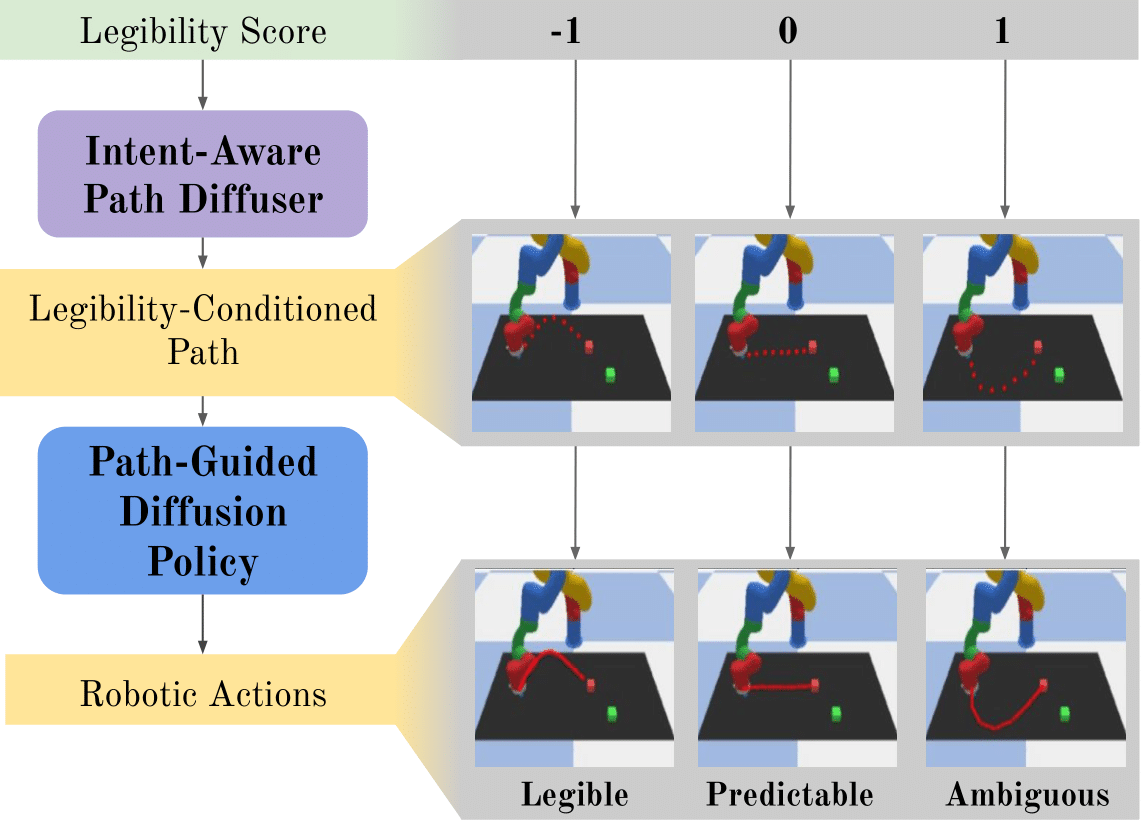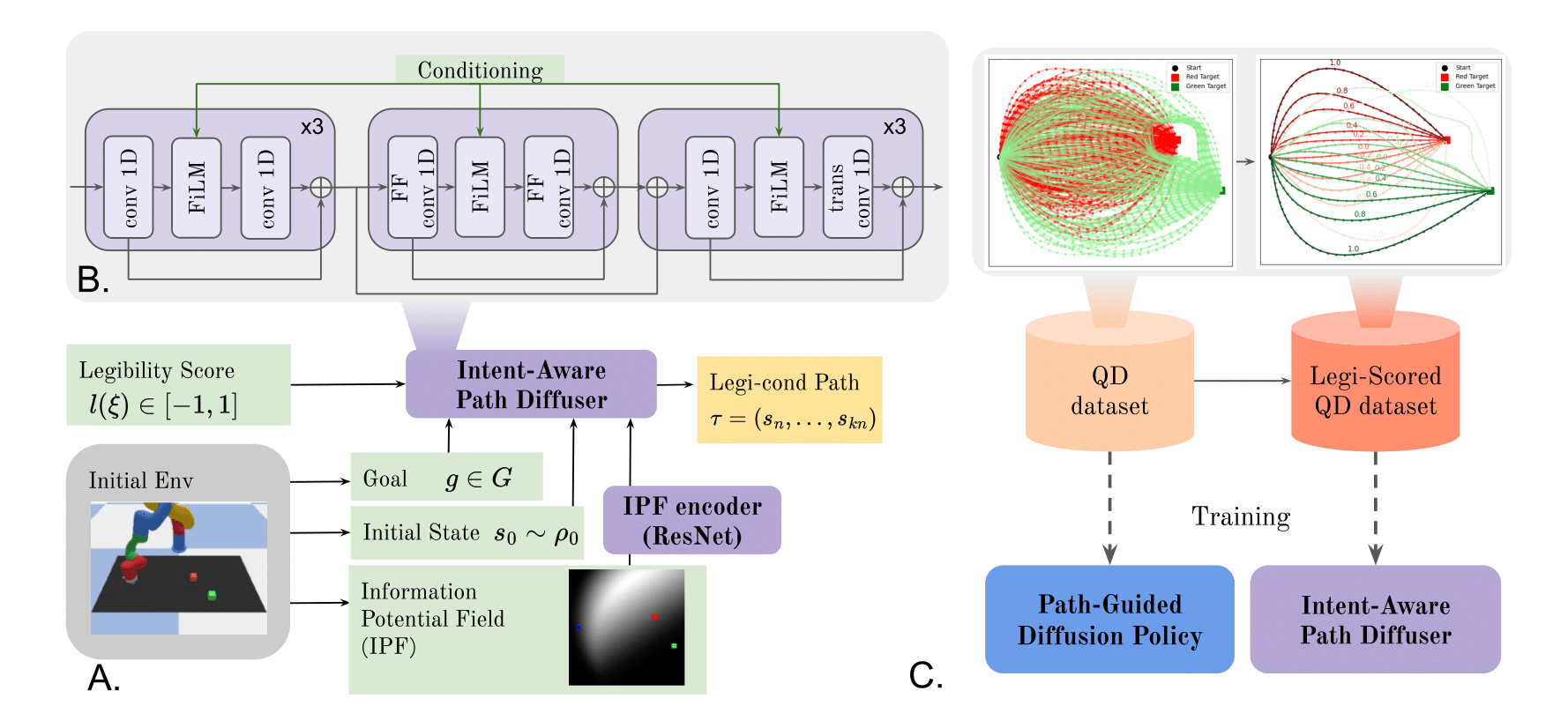
Legibility of robot motion is critical in human–robot interaction, as it allows humans to quickly infer a robot’s intended goal. Although traditional trajectory generation methods typically prioritize efficiency, they often fail to make the robot’s intentions clear to humans. Meanwhile, existing approaches to legible motion usually produce only a single “most legible” trajectory, overlooking the need to modulate intent expressiveness in different contexts. In this work, we propose a novel trajectory generation framework that enables controllable legibility across the full spectrum—from highly legible to highly ambiguous motions. We introduce a modeling approach based on an Information Potential Field to assign continuous legibility scores to trajectories, and build upon it with a two-stage diffusion framework that first generates paths at specified legibility levels and then translates them into executable robot actions. Experiments in both 2D and 3D reaching tasks demonstrate that our approach produces diverse and controllable motions with varying degrees of legibility, while achieving performance comparable to SOTA.

Figure: Detailed architecture of our two-stage conditional diffusion framework.
(A) The framework takes as input the initial environment state $s_0$, a candidate goal $g$, the IPF that encodes the probabilistic structure of goal inference, and a continuous legibility score $\ell(\xi)$ specifying the desired level of expressiveness.
(B) The Intent-Aware Path Diffuser is a U-Net conditioned via FiLM layers on the inputs, which generates a path $\tau$ using diffusion process.
(C) The Path-Guided Diffusion Policy is trained on trajectories generated by the QD algorithm, using the corresponding paths as conditioning inputs. The Intent-Aware Path Diffuser is trained on the same QD trajectories, labeled with potential-based legibility scores.
This work was performed using HPC resources from GENCI–IDRIS (Grant 2025-[AD011016424]).
This research was partially funded by the French National Research Agency (ANR) under the OSTENSIVE project “ANR-24-CE33-6907-01.”
BibTex Code Here